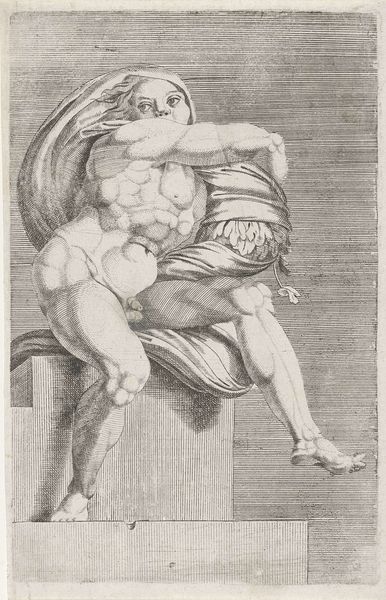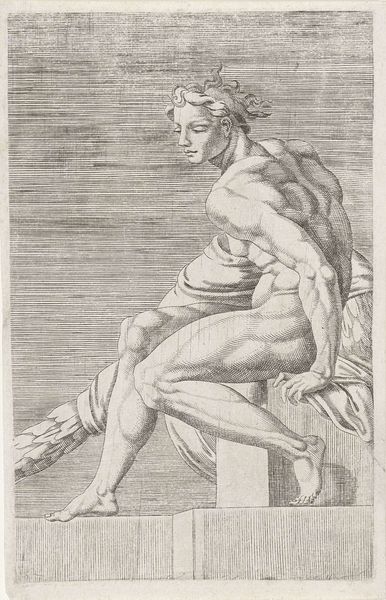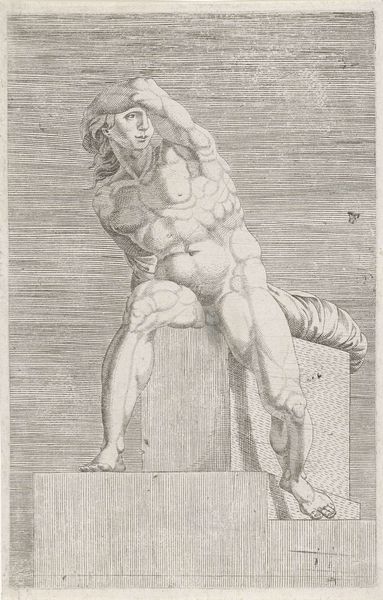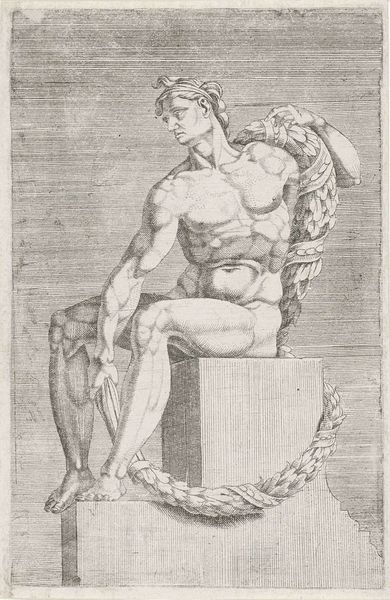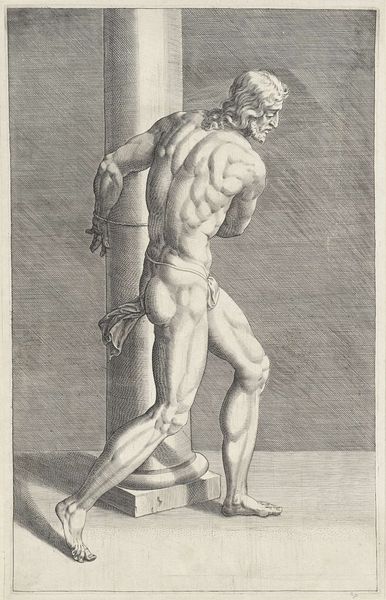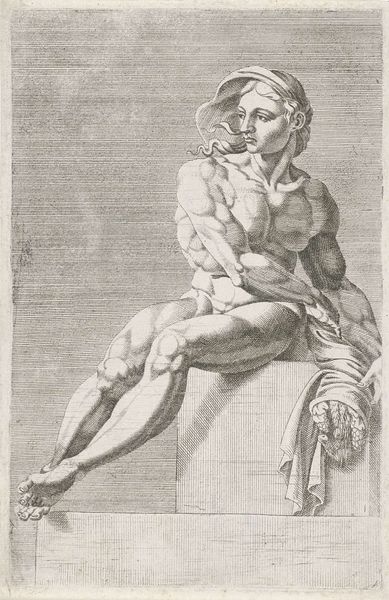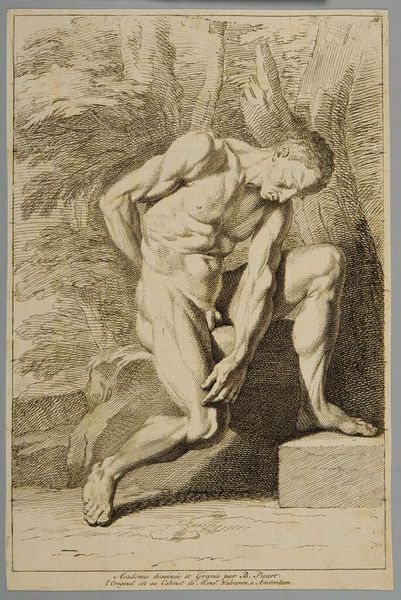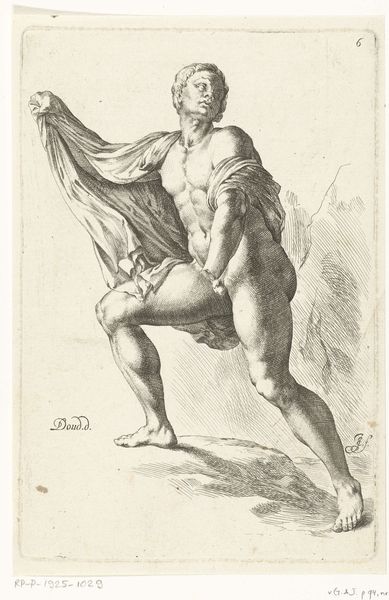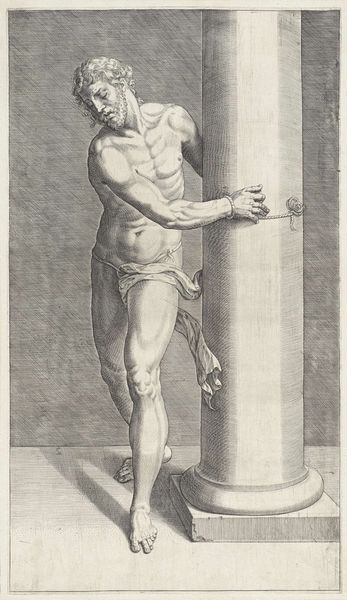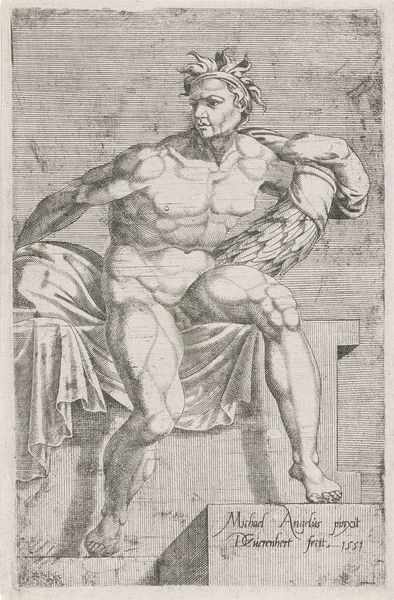
drawing, paper, ink, engraving
#
drawing
#
pencil sketch
#
charcoal drawing
#
mannerism
#
figuration
#
paper
#
ink
#
pencil drawing
#
portrait drawing
#
history-painting
#
nude
#
engraving
Dimensions: height 216 mm, width 139 mm
Copyright: Rijks Museum: Open Domain
Editor: Here we have "Zittend naakt uit de Sixtijnse kapel", or "Seated Nude from the Sistine Chapel" by Dirck Volckertsz Coornhert, made around 1551. It’s an engraving on paper, and I'm immediately struck by how idealized the figure is, almost impossibly muscular. What historical factors might have influenced Coornhert's approach? Curator: This print demonstrates the enormous influence of Michelangelo, specifically his figures from the Sistine Chapel. Think about the historical context: Coornhert never actually went to Rome; this image and others like it circulated through prints, disseminating the Renaissance style across Europe. The body, treated here as a monumental and perfect form, takes on a distinctly public role through its reproduction and accessibility. How do you think that affects its message, compared to Michelangelo's original? Editor: So, the print media changes its impact… interesting. I suppose the image loses some of its aura as a unique creation but gains a wider audience and potentially a different interpretation in a new cultural setting? Curator: Exactly! The print transforms the way people engage with classical ideals. It allows for broader artistic exchange and appropriation, while simultaneously participating in the nascent art market. Consider the original context within the Vatican; its sacral role contrasted with this more secular and widely distributed copy. The image becomes democratized, but perhaps also decontextualized. What sociopolitical implications do you think this could raise, given the historical moment? Editor: It definitely challenges the art world's traditional hierarchies. And I suppose that a greater distribution of the work may cause different social reactions than the original. Curator: Precisely. What initially began as divine, through art, becomes both commercial and, perhaps, subversive. Editor: That really puts a new perspective on it. It’s fascinating how the artwork's role shifted depending on who was seeing it, and where.
Comments
No comments
Be the first to comment and join the conversation on the ultimate creative platform.
